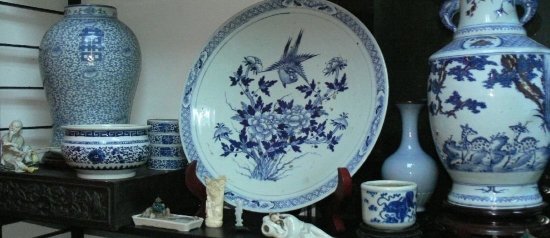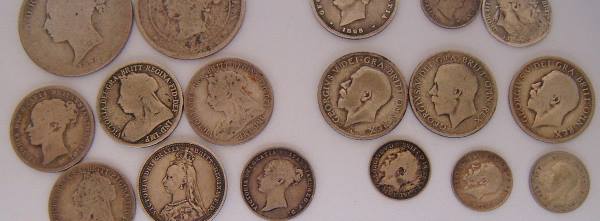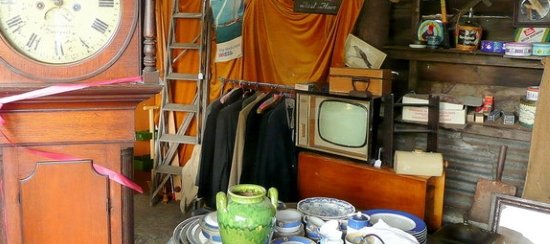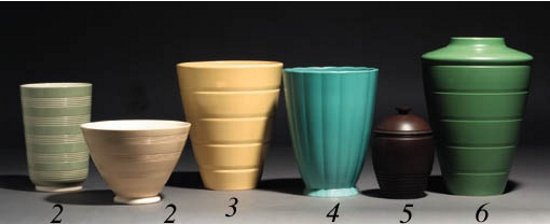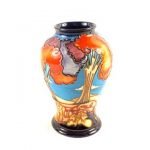The popularity of buying Art Deco at auction surfaced for the first time in the late 1960’s when the major London auction houses began to respond to a revival of interest in this stylish and iconic period. For a twenty year period from the end of the second world war, the Deco style had had been viewed as a dated, almost vulgar art form, that was out of keeping with the austere times of 1950’s Britain with it’s rather grey image and thrifty post-war mentality.
But as Britain started to ‘swing’ again with the flower-power era, so the attention of a whole new generation turned its eyes to Art Deco once again.
Dealers in Art Deco also began to appear at popular trading venues such as the Portobello Road. Initially sneered upon by established dealers in ‘traditional’ antiques, many went on to establish their own reputations as successful market stallers or indeed to establish their own galleries in the nearby Kensington Church Street W8.
The Chelsea set had their own venue for sourcing Art Deco at the Antiquarius Galleries in the Kings Rd, while Church St Marylebone saw the emergence of Alfies Antique Market which drew a large crowd of dealers in everything Deco.
Auction houses were keen to respond to this new enthusiasm, and soon small sections of Art Deco could be spotted within the context of a broader more general sale. By the early 1970’s though, the Art Deco auction was born. From the start, the period seemed stylistically linked in most collector’s minds with the earlier design period of Art Nouveau. Hence, to this day, a Deco collector or dealer may well share an admiration for the Nouveau period as well, and auction houses often showcase the two different periods within the same auction catalogue.
With the evolving popularity of Art Deco in the marketplace came an inevitable demand at auction for key designer names that had shaped the look of the period between the wars.
The term ‘Art Deco’ has always brought to mind the style and lifestyle of 1920’s Paris with it’s young fashion and interior designers, it’s dancers like Josephine Baker and it’s carefree almost hedonistic society set. The interior designers of the day were looking to blend luxury with a new and equally important element borrowed from the American picture showsŠglamour.
In France between the wars there were several interior designers able to glamourise furnishings with a style never glimpsed before. Leading these names were luminaries such as Emile-Jacques Ruhlmann, Sue et Mare and Jean Dunand. They evolved what was to become known as the French Salon look that was both modern in style but gave no compromise on the materials used in construction. These designers employed master craftsmen, and most importantly, they were designing for clients who wanted compact ‘bijou’ furnishings produced to the highest standards.
Today at auction, the best of the French interior designers command hundreds of thousands of pounds for key examples of their craft. The ‘bijou’ nature of some of their bedroom and salon pieces mean that collectors and interior designers can accommodate them in apartments just as easily as grand homes.
The French art glass market is also a key feature of many Art Deco auctions, and once again it is the top designers of the period whose work is highly prized. During the 1970’s and 80’s the work of the great French glassmakers such as Rene Lalique, Marius Sabino, Gabriel Argy-Rousseau and Almeric Walter came to be internationally acknowledged. Lalique glass had it’s origins in the Art Nouveau period, but by 1920 Rene Lalique was designing innovative Art Deco pieces which could be mould-blown into a whole range of vases, bowls, statues and interior panel work. The age of the luxury motor car had also seen a rise in the demand for stylish car mascots, and by the 70’s these too would find their own price-niche at auction, either in Deco or in Automobilia sales. So great was the demand for discontinued Lalique glass at auction, that by the mid-80’s whole sales were dedicated to this one subject. The best examples in coloured glass were bid to tens of thousands of pounds, while the unique ‘cire-perdue’ or lost wax pieces were sometimes bid close to the £100,000 mark. The French art glass bubble was set to burst once the Japanese economy started to slow-down in the early 90’s. Many Japanese dealers had been stockpiling art glass with European and American buyers fanning the flames. This led to a dramatic decline in bidding as world markets slumped, and although not as badly affected as Gallé glass, Lalique glass would languish in the doldrums for the first half of the nineties, before picking up momentum once again.
Although so far Art Deco might seem a very French art form, if we turn to the field of ceramic wares, the British designer can be seen much more to the fore. Leading the field was a lady whose name is today synonymous with Art Deco: Clarice Cliff. Clarice was rather a latecomer to the auction world. There had been a very successful retrospective exhibition of her work at the Brighton Museum in 1972, but it wasn’t until the early 80’s that the auction houses started to feature her works in solo sales. Once established however, the market for Clarice Cliff pottery at auction became quickly and enthusiastically embraced. Nobody had quite anticipated the scale and variety of pieces available to collect, and a number of niche-markets were established for her wares according to shape and pattern. The general rule of thumb was that collectors liked the more overtly Deco shapes combined with the rarer Deco patterns. These could be featured on sugar shakers, cruet sets, bowls, vases and novelty wares, with prices to suit all pockets. At the lower end, a collector could bid at auction on a standard pattern like ‘Rhodanthe’ on a plate or bowl and probably secure it for less then £150. At the top end were the select few with serious money and a serious intent to seek out the best examples available. There were gasps in 1983 when an ‘Age of Jazz’ figure made £1,500 at auction, but this would prove a very wise investment, as such a figure would be closer to the £15,000 mark by the late nineties. Inevitably, as with the art glass market, the Clarice market has had its peaks and troughs. Today the bidding is much more selective than it was just two or three years ago. The top pieces continue to make headline news, but the middle ground is struggling as both collectors and dealers re-appraise what they want to buy.
The spirit of the Art Deco era was one of casting aside inhibition and finding a new freedom of movement and expression. This was perhaps best captured in the examples of bronze and ivory statuettes that were designed during the period. Today they form the backbone of any serious Art Deco auction. A collector can begin learning by looking at the many spelter figures that were produced during the period. These often adorned clock garnitures and can be picked up quite cheaply in provincial auction rooms. The carved ivory and cold-painted bronze figurines of the period however command much higher prices, and as usual it is the key designer names that collectors want to find in an auction catalogue. Josef Lorenzl is one such name, and his work typifies the new found freedom of expression that the modern girl of the 1920’s wanted to express. His ladies are self-confident and stylish, often with long bare legs revealed and arms held wide. They wear short tunic skirts of a type not to be glimpsed again until the mid 1960’s. In terms of value, it is always the bronze and ivory figurines that are the most sought after among Lorenzl’s work. Condition is also important because his ladies are hand-painted and this can become subject to wear and corrosion. Typically we see them displayed on onyx bases and one might expect to pay around £2,000-2,500 for a bronze and ivory model that is around 30cm high including the base. A painted bronze figure without the ivory might be closer to £800-1,200 at auction (there will be buyers premium to pay on top of this).
At the top end of the market are the figurines of Ferdinand Preiss and Dimetre Chiparus. Relegated to general household sales by the end of the 1950’s, the work of these two artists could be picked up in the salerooms for no more than £30-40 per model. Forty-five years later it is a very different story. Serious collectors of the Art Deco style adore their two master craftsmen. Preiss is credited with having a marvelous eye for detail. The ivory that expresses movement in so many of his studies is exquisitely carved and hand-painted. His dancers seem to have been carved from life, with none of the stiff or unnatural poses that one might see in a poorly executed spelter figure from the period. Many of his figurines are titled with names such as the ‘Flame Leaper’, the ‘Torch Dancer’ or the ‘Charleston Dancer’, and their stylish poses and often revealing costume make for great dramatic impact. Chiparus too is master of the dramatic pose with many of his studies observed from theatre and ballet. His dancers often sport elaborate jewelled costume and exotic headdress, with bold uninhibited poses. The demand for his work is international but particularly strong in London, New York and Paris. A number of his studies are made in three different sizes, with the largest size often commanding a value over £30,000. For the rarer models the sky is the limit, and top auction rooms have seen the £100,000 price barrier broken more than once. On a note of caution, one should never bid on a Preiss or Chiparus figure without the auction rooms having described it as dating from the Art Deco period. Many copies have been cast from the late 70’s onwards, typically in the far-east and these can be quite convincing to the untrained eye.
The Art Deco period is likely to inspire bidders at auction for many years to come. Nowadays, younger bidders are also embracing 1970’s and 80’s design and no doubt this modern period may overshadow the popularity of Deco with time. But for now auctions, fairs and galleries continue to highlight the spirit of an era where glamour and style ruled the world.

